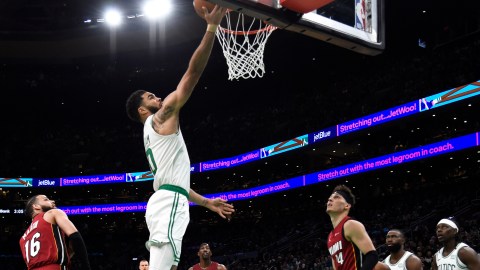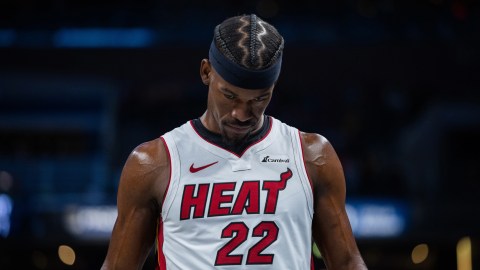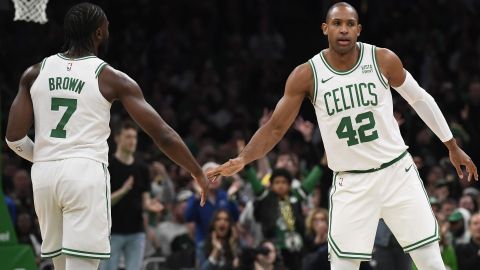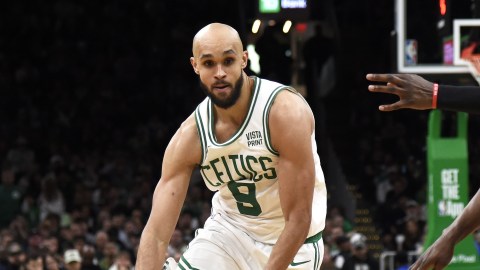ESPN is coming out with a “30 for 30” documentary about the historic rivalry between the Boston Celtics and Los Angeles Lakers. And now, we have some more details about the three-part event.
Parts One and Two of “Celtics/Lakers: Best of Enemies” will debut back-to-back on Tuesday, June 13, at 8 p.m. ET on ESPN. Part Three will premiere Wednesday, June 14, at 8 p.m. on ESPN.
The whole documentary is five hours, according to a press release issued Thursday by ESPN, and “chronicles the storied franchises’ epic clashes and relives the Boston-LA battle from both sides, with sensational footage and fresh, insightful interviews.”
The documentary will feature two narrators — Ice Cube for the Lakers and Donnie Wahlberg for the Celtics — and include interviews with key figures from the rivalry. The film is directed by Jim Podhoretz and executive produced by Jonathan Hock.
NBA fans are well aware of the history that exists between the Celtics and Lakers, two historic franchises, but the “30 for 30” figures to show how their NBA Finals matchups in the 1980s helped increase the popularity of the league and influence pop culture.
Here’s some more information about the documentary’s two-night launch, via ESPN:
Night One
Parts One and Two of the film not only trace the history, but also present a fabulous cast of characters who would change the NBA and open America’s collective mind. At the center of it all in the 1980s was a pair of brilliant basketball talents — Larry Bird and Magic Johnson. Bird’s Celtics and Magic’s Lakers circled each other for four years until they faced off in an epic NBA Finals in 1984.
Night Two
Part Three picks up the story right after the thrilling 1984 NBA Finals and then explores the saga from 1985 to 1987 as the teams’ disdain for each other gradually turns to respect. The Celtics and Lakers — Bird and Magic in particular — transformed the fans’ view of the game from simple black-and-white to full-blown Technicolor. By the end of their last battle of that era in 1987, while there was still animosity, they had also developed a hard-earned respect for each other. In the final analysis, it was a rivalry that forced America to no longer view the league in black and white.




